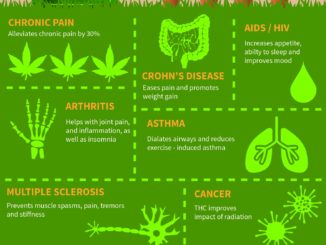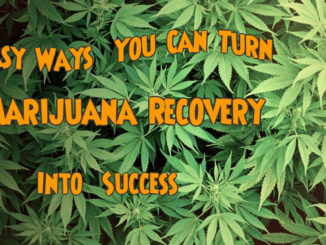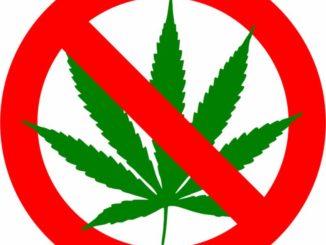
The movement for the complete legalization of marijuana continues to pass through several stages, from absolute enforcement (Texas), to decriminalization (many states), to medical use only (California and others), to hands-off, do-what-you- want (newly established in Colorado and Washington.) We know from long experience how poorly things turn out whenever the government steps in and prohibits anything that changes the mood, pleasure, or sobriety of its citizens.
When evaluating the societal impact of marijuana versus other stimulants, a common question arises: "Would you rather live next door to 100 pot smokers or one meth user?" And everyone who resides adjacent to the marijuana aficionado knows why he is always the best choice. Pot Guy is stereotypically mellow and quiet, while Meth Man is disruptive, agitated, paranoid, noisy, and invasive of other people need for peace. Weed people go to sleep; tweaker people keep you from getting any. It's tough to get some rest when your neighbor is working on his transmission or sawing metal pipes at 3:00 am, Lynyrd Skynyrd music blaring away.
As such, pro-marijuana reform groups often speak to the relative dangers of alcohol, in terms of the overall health risks and behavioral problems, when compared to their drug of choice. Alcohol is labeled by many medical professionals as a whole-body poison (a flavored one, but damaging nonetheless). It affects every organ, starting with the liver and brain, as well as the kidneys, bladder, stomach, and pancreas. The accompanying malevolent behavioral issues tied to alcohol abuse are well-noted and catastrophic, ranging from homicide, suicide, and sexual assault to domestic violence, child abuse, and random or targeted attacks on people who crossed the violent drinker's path.
Heavy marijuana smokers certainly can't ignore the impacts on the human brain and body, from depression or memory issues, to lung damage to several forms of cancer. (Inhaling carcinogenic smoke is not the best way to consume anything, hence the evolution toward dosing with marijuana-flavored foods, candy, sauces, etc.)
When I teach my workplace violence prevention programs, we talk about the drugs that tend to be a disinhibitor for violence, with alcohol being Number One. When people ask me if marijuana users can become violent, before I can answer, some wag in the crowd usually shouts, "Not unless they run out!" We all laugh, we agree that marijuana is not a drug that is connected to violence, like booze and stimulants, and we move on.
But while pro-pot people can take the high road (no pun intended) over their alcohol-using counterparts when it comes to violence, or getting behind the wheel of a car loaded on either, the debate as to how much is too much is easy to measure for one and not so for the other.
While the national standard for driving while intoxicated is a blood alcohol level of at least.08, there is no set standard for marijuana use and driving. This is the argument the pro-marijuana lobby has yet to master. How much THC-CCOH (a metabolite in cannabis) in a driver is too much – enough to cause impairment – or too little to make a difference? Some scientific studies are looking at how many nanograms per milliliter of THC-CCOH in the driver's urine could suggest a standard for impairment, but so far this measurement is too imprecise because it does not consider the user's driving ability.
Some drinkers can drive relatively safely even at a blood alcohol of.10 (although I certainly wouldn't ever ride with them), while others might hit five parked cars after only one beer. Body weight, genetic background, tolerance, and drinking experience all play a part in how much impairment is evident, as opposed to only how much is in the blood. Your old Uncle Pete might have been able to put down a quart of scotch a day and keep his job, marriage, driving record, and health intact for 50 years, but you're not your Uncle Pete.
But for the pot-using driver, what is the "Goldilocks Standard": too little, too much, or just right, when it comes to THC-COOH? Today, the strength of much of the marijuana grown indoors, with constant hot lights and lots of water, and using new seeds and mixing strains, is eight to ten times more powerful than the pot of twenty to thirty years ago. One hit of smoke from this newer and stronger weed for some drivers could be enough to cause catatonia, hallucinogenic effects, memory, vision, balance, motor skills, and coordination problems. Other people with a lot of pot smoking experience might be able to function fairly effectively (like the longtime drinker who drives, but I'm not still sitting in the passenger seat with the pot user either). Keith Richards has consumed a lot of interesting things in his life and he can still pay a mean guitar after 50 years, but you aren't Keith Richards.
And how about the workplace and marijuana use? With their medical marijuana cards (MMC) in their hip pockets, some employees in those states that issue them believe they have a free pass when it comes to not passing drug tests for marijuana. Some of these failed drug tests may come during pre-employment screens, post-accident tests, random tests, or tests based on for-cause or "reasonable suspicion."
"You can't fire me!" goes their defense, "I have a MMC and I told you I use marijuana medicinally." Except that the federal standard is that marijuana is still an illegal drug and as such, companies can and do enforce their zero-tolerance policies for employees using alcohol and illegal drugs in their facilities, or while operating their machinery or vehicles, just the same as before.
So until the scientific community comes up with a nationalized standard for what the courts can accept as level of marijuana impairment – below a certain level in your urine is okay to get behind the wheel, above a certain level makes you subject to arrest for being " drunk on drugs "- then the argument for and against Driving on Pot, Enthusiastically (DOPE) will continue.
And until the feds stop their part of the War on Drugs that pertains to marijuana use, sales, cultivation, distribution, possession, growing, etc., then companies will continue to have the right to ask their employees not to use pot at work or come to work high.
Proudly WWW.PONIREVO.COM



